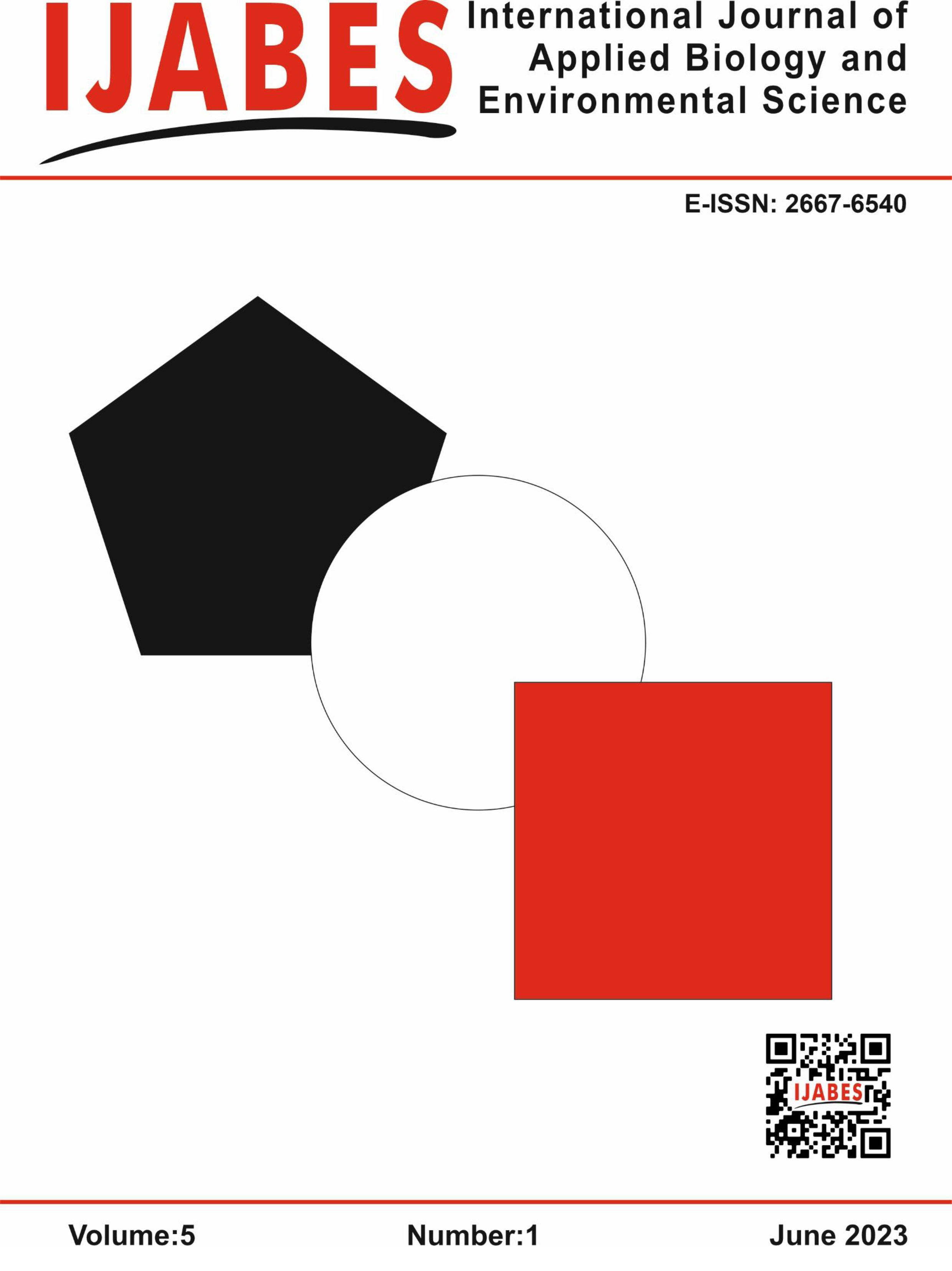








Yayımcı adresi: Hadımköy TOKİ Mevlana Cd. B1/2 D:2
Hadımköy / Arnavutköy / İstanbul

This work Licensed under the Creative Commons Attribution 4.0 International License.
Volume: 2 Issue: 1 - 2020
| 1. | Cover Page I |
| 2. | Contents Pages II - III |
| EXPERIMENTAL RESEARCH | |
| 3. | The effect of initial pH on production mycelial biomass of Pholiota (Strophariaceae, Basidiomycota) species in liquid static culture Liubov Regeda, Nina Bisko doi: 10.5505/ijabes.2020.10820 Pages 1 - 3 The article presents the effect of initial pH on production mycelial biomass of Pholiota species in a liquid static culture among seven Pholiota species from the IBK Mushroom Culture Collection of М.G. Kholodny Institute of Botany, National Academy of Sciences of Ukraine. New data on production mycelial biomass in a liquid static culture of Pholiota species are given. The growth characteristics of species depended on initial pH are shown. The most suitable pH values for each Pholiota species were find out, it ranged from 5,3 to 6,5. During cultivation, the initial pH of the nutrient media become lower. The studied Pholiota species differed not only in their ability to synthesize different amounts of biomass at optimal pH of the culture medium, but also demonstrate varying degrees of sensitivity to pH changes. |
| ORIGINAL RESEARCH | |
| 4. | Usage of waste active sludge obtained from a membrane bioreactor system as a low-cost biosorbent for removal of Cu(II) ions Ülküye Dudu Gül, Çağlayan Açıkgoz, Hülya Silah doi: 10.5505/ijabes.2020.22932 Pages 4 - 8 Bu çalışmanın amacı ucuz bir adsorban önermek ve Membran biyoreaktör (MBR) sisteminin atık çamurunun yeniden kullanılabilirliğini araştırmaktır. Bu nedenle bu çalışmada bir membran biyoreaktör (MBR) ünitesinden mantar biyokütlesinin atık çamur kompostunun bakır biyosorpsiyon kapasitesi araştırıldı. pH (2, 4, 6 ve 8), temas süresi (1-24 saat) ve Cu (II) konsantrasyonunun (9.74 ila 98.21 mg / L) etkileri, laboratuar ölçeği seviyesindeki deneylerde test edildi. Denge izotermlerini tanımlamak için Langmuir ve Freundlich modelleri kullanıldı. Ayrıca kinetik özelliklerin belirlenmesi için yalancı birinci derece ve yalancı ikinci derece modeller kullanılmıştır. Adsorbanın fonksiyonel gruplarını belirlemek için FTIR analizi yapıldı. Maksimum Cu (II) uzaklaştırması pH 4'te % 89.65 olarak gerçekleşmiştir. Adsorbanın maksimum Cu (II) alım kapasitesi 14.20 mg / g olarak bulunmuştur. Bu çalışmanın sonuçları, bir MBR sisteminin atığı olan kurutulmuş aktif çamurun, Cu (II) 'nin endüstriyel atıksulardan uzaklaştırılması için etkili ve düşük maliyetli bir adsorban olduğunu göstermiştir. The aim of this study is to suggest an inexpensive adsorbent. It is also planned to reuse the waste sludge of membrane bioreactor (MBR) system. For this reason, copper biosorption capacity of waste sludge compost of fungal biomass from a membrane bioreactor (MBR) unit was investigated. The effects of pH (2, 4, 6 and 8), contact time (1- 24h) and Cu(II) concentration (9.74 to 98.21 mg/L) were tested at batch scale level experiments. In order to describe the equilibrium isotherms, the Langmuir and Freundlich models were used. Also, kinetic properties were determined as pseudo-first-order and pseudo-second-order models. To determine the functional groups of adsorbent, FTIR analysis was done. The maximum Cu(II) removal occurred as 89.65 % at pH 4. The maximum Cu(II) uptake capacity of adsorbent was found as 14.20 mg/g. The results of this study showed that the dried active sludge, a waste of MBR system, was an efficient and low-cost adsorbent for removal of Cu(II) from industrial effluents. |